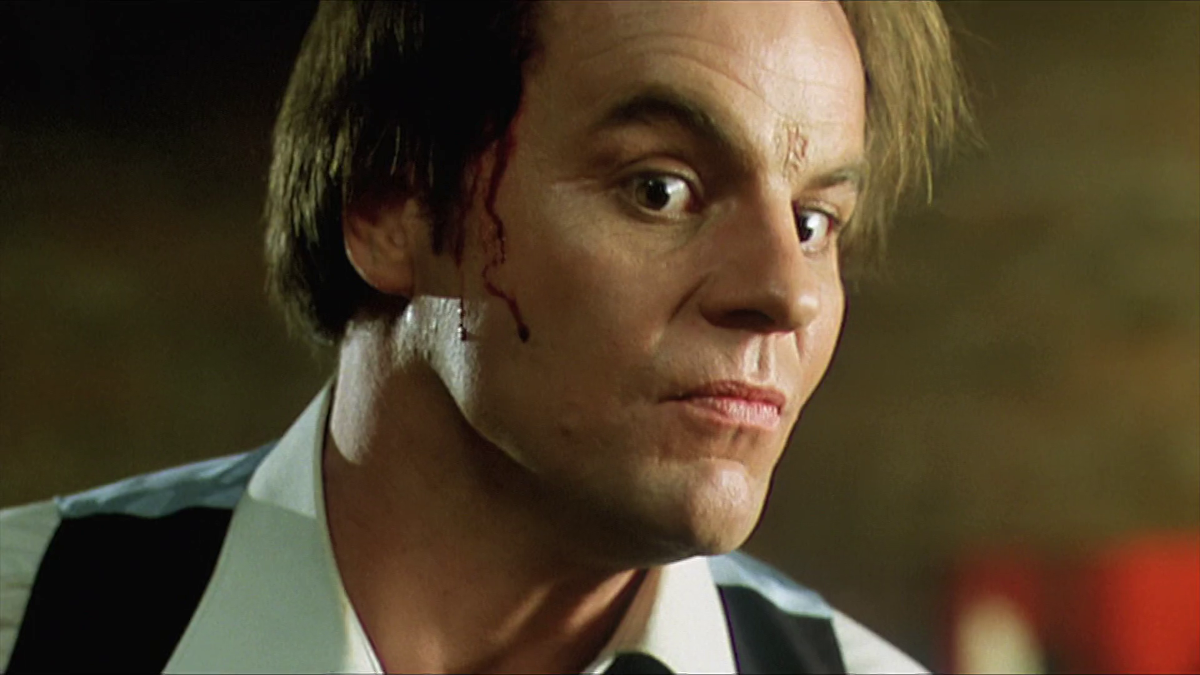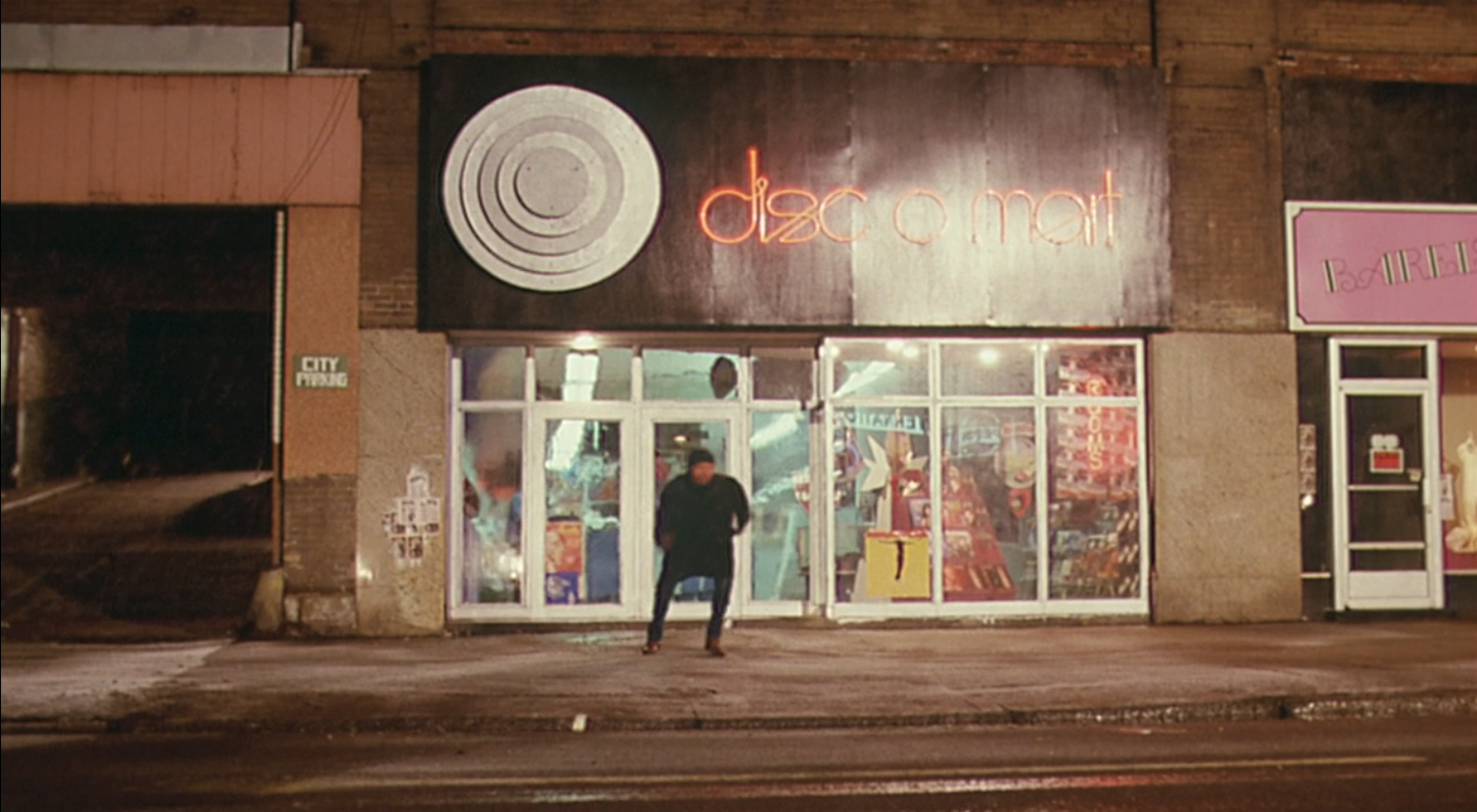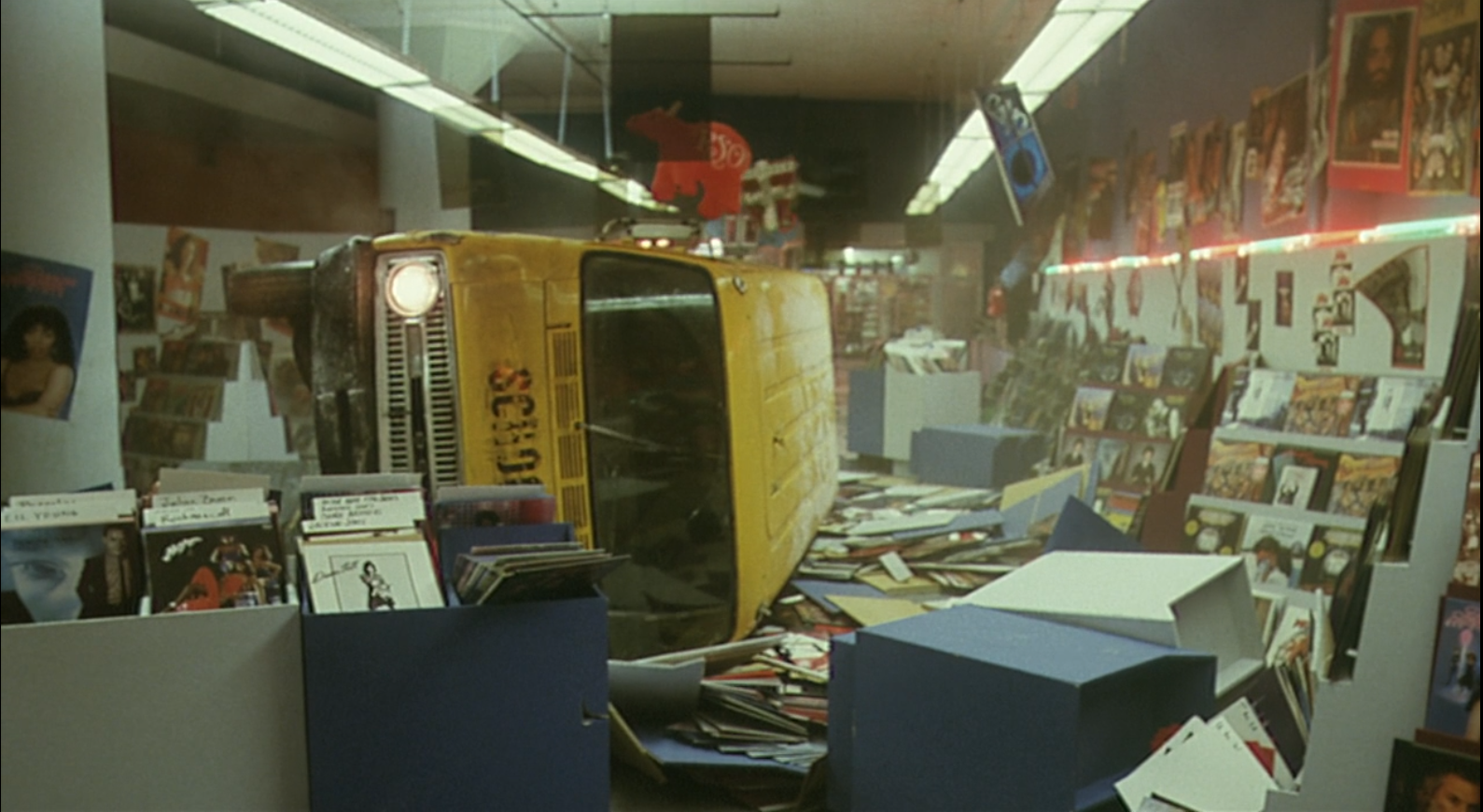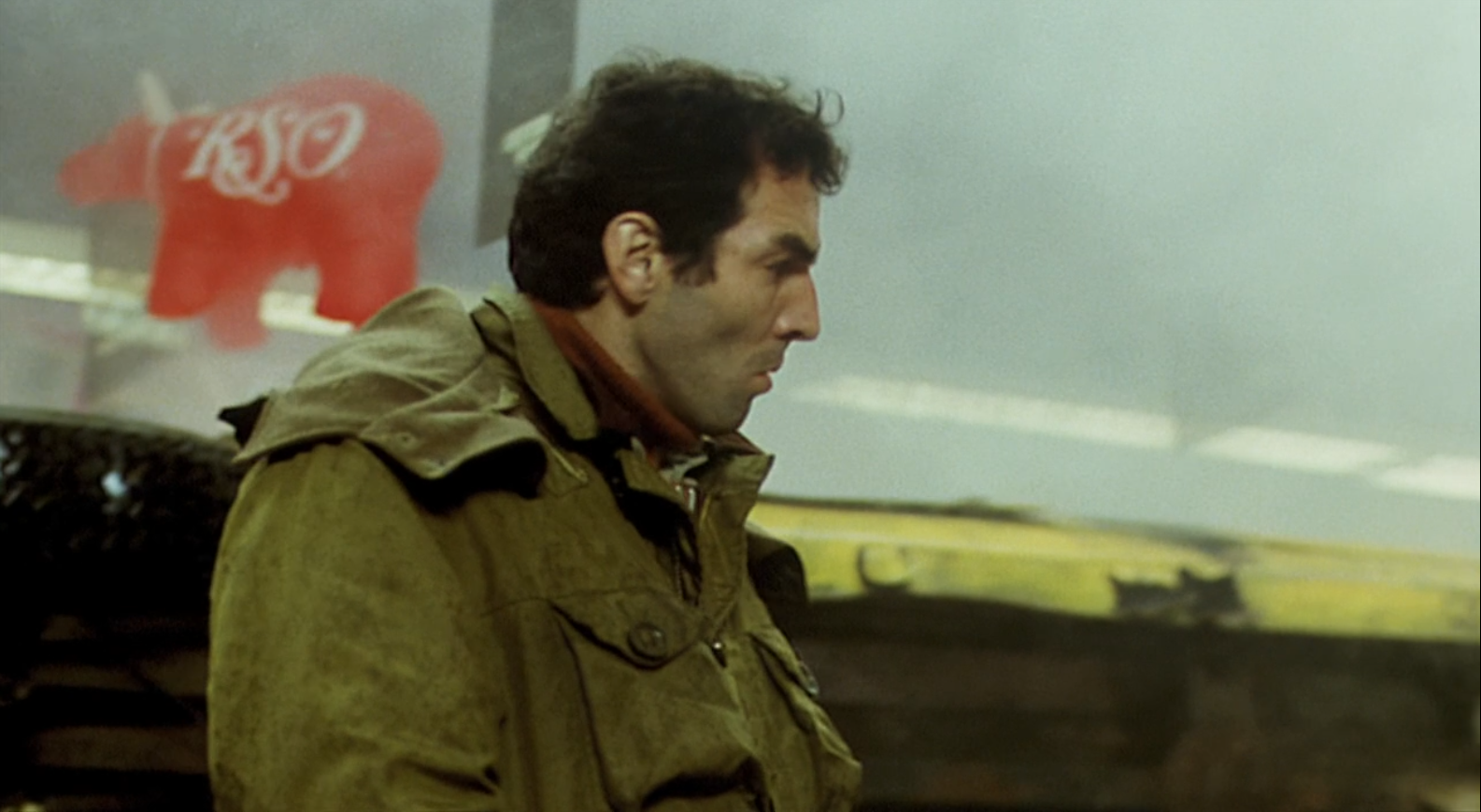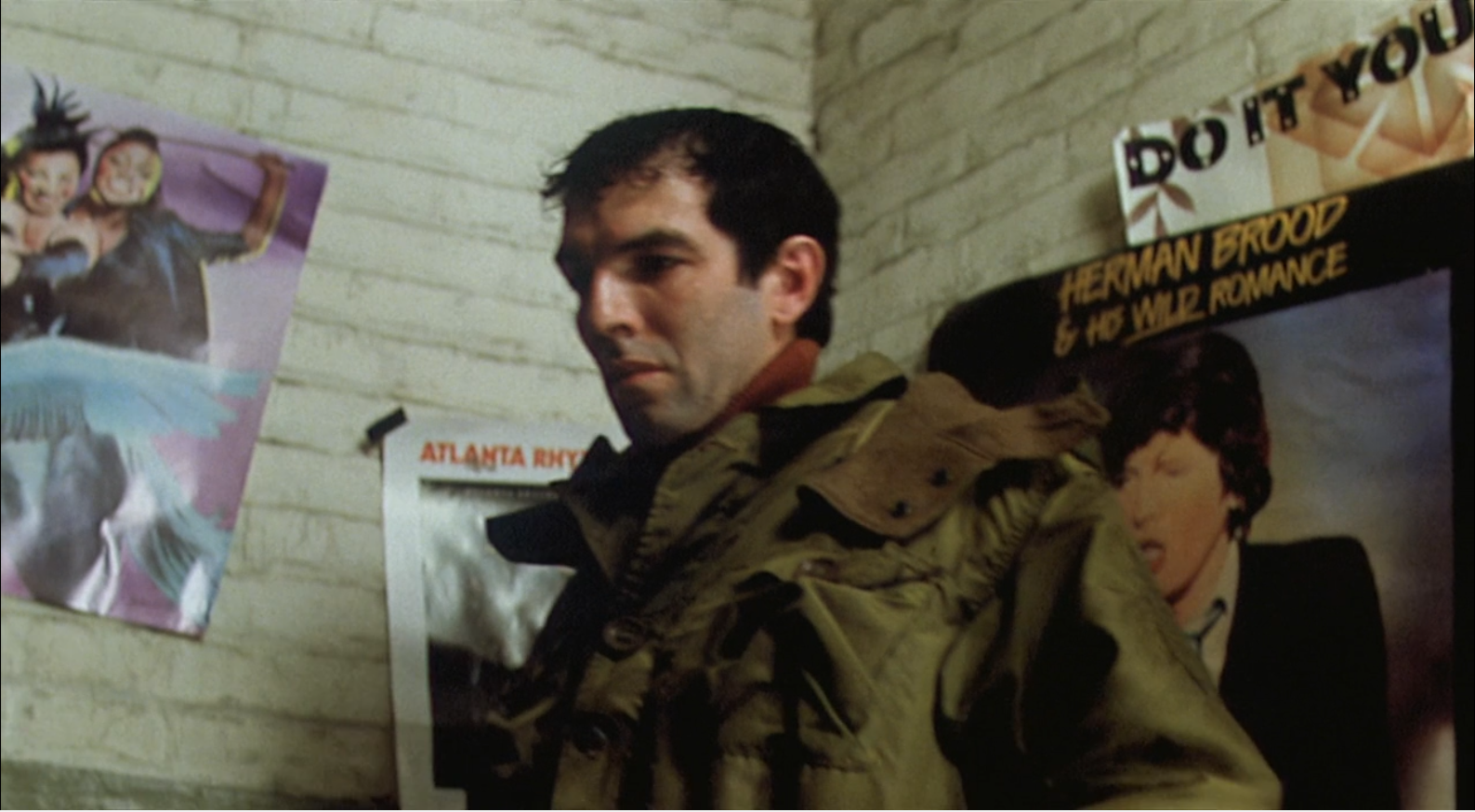Bottom Line: Scanners is an entertaining mashup of Cronenberg’s fascination with freaks and a traditional spy movie, with Michael Ironside and Patrick McGoohan bringing ample menace and mystery to their supporting roles. Ignore the silly genre stuff and stick around for the mental gymnastics.
Having mental powers is a wonderful fantasy I’ve indulged in many times. Who wouldn’t want to move objects just by looking at them, or read someone’s mind without having to ask questions and decipher responses? Mental telepathy would make everyday life so much easier. Take out the trash? Done with a glance. Not sure if someone’s lying to you? Tune into their thoughts and find out in an instant. Abilities like these would be such a time saver. Of course, being gifted has to come with a price. If you’ve seen Carrie, you know that a blessing is always a curse in disguise. In Scanners, telepaths quickly become overwhelmed when they’re around people. Unable to filter out the thoughts of others, your mind is filled with the sounds of people thinking about all sorts of nonsense.
Such is the case with Cameron Vale (Stephen Lack), the hero of the story. He lives as a bum, eating scraps at the mall food court. One day he can’t help but hear a woman nearby who disparages him, so he gives her a seizure in return. The resulting commotion attracts serious men in overcoats who subdue Vale with a drugged dart. After he’s given the drug Ephemerol, Vale is recruited by Dr. Paul Ruth (Patrick McGoohan) for a secret and dangerous mission. (There are no other kinds, sorry.) Another scanner named Darryl Revok (Michael Ironside) has been recruiting scanners to join in his mission to take over the world. Those who refuse to join him are eliminated. How evil is Revok? He slips into a scanning presentation and explodes the head of a “good scanner” in front of a huge crowd. I’ve been in many dull presentations over the years, so I knew exactly how the victim felt. Regardless, now we know that Revok is both evil and incredibly powerful.
Ruth trains Vale how to control his powers, and Vale quickly discovers he can give a yoga master a heart attack. Now that Vale is able to kill someone with his mind, Ruth sends him out into the world to find Revok. As with other espionage films, most of the people Vale meets along the way end up getting killed. Vale meets troubled artist Benjamin Pierce (Robert A. Silverman), maker of huge, nightmare-inducing sculptures. Revok’s goons dispatch of the artist quicker than a nasty review by the local art critic. Vale then pairs up with good scanner Kim Obrist (Jennifer O’Neill), who introduces him to her club of scanner pals just in time for Revok’s henchmen (and woman) to blast them. Because of genre convention, Obrist tags along for the ride, even though she’d be safer one hundred yards from Vale and Revok.
Like Revok, Vale’s powers apparently have no limits. He scans a computer system used by Dr. Ruths’ company via a baud modem connection and learns that he, Revok and Ruth are connected. After Revok’s men finally capture Vale and Obrist, Revok explains everything to Vale with a helpful supervillain monologue. Revok insists he’s been trying to find and recruit Vale, a notion that even someone as naive as Vale finds incredulous. (When someone sends people with shotguns after you, suspicion should be top of mind.) When Vale refuses, a fiery and gruesome scanner clash ensues. (Vale and Revok’s epic battle is what this movie is primarily known for.) If you’re familiar with writer-director David Cronenberg’s other films, you won’t be disappointed.
Much like other films about telekinesis and ESP, Scanners makes heavy use of the wild-eyed stare to convey when mental powers are being used. Ironside, so naturally menacing, is able to do much with a simple look. This was one of his early villain roles, and he’s so effective I wonder why his career was relegated to character work for so many years. Lack, unfortunately, is underwhelming as an actor. The movie tries to explain this away as evidence of Vale’s lack of socialization. McGoohan is expectedly great as the doctor, where his magnificent speaking voice efficiently conveys a world of emotions with just a few words.
Scanners is at its best when it’s exploring the strange world of the scanners. Cronenberg is at his best when he zooms in on characters who have been physically altered in bizarre ways. He brings each scan to queasy life, filling the soundtrack with throbbing noises, gurgling voices and nosebleeds. The movie loses its way when it tries to be an action picture. The power of the scanners increases with each action sequence to the point where they’re more superheroes than misfits of science. The plot feels like Cronenberg’s attempt to be more mainstream, and while that direction is not necessarily a mistake, it’s one Cronenberg would avoid in future films. His movies are much more interesting when he’s subverting genres instead of conforming to them. Scanners is still fun as a B-movie, and for Cronenberg’s fans it serves as a stepping stone for his subsequent science fiction films. Recommended.
Analysis
People were fascinated with mental telepathy and telekinesis in the Seventies. This interest was reflected in popular culture in several movies of that decade, which included Carrie (1976), The Fury (1978) and The Medusa Touch (1978). With Scanners, Cronenberg provides his own unique spin on the genre. Instead of being blessed with their mental powers, the characters inherited them through a drug intended to alleviate the painful symptoms of pregnancy. The underlying theme of the movie, of people being changed due to medical malfeasance, is one Cronenberg had explored in previous movies (Shivers, Rabid and The Brood). The difference with Scanners is that instead of the characters being transformed into horrific, murderous beings, this movie uses traditional action movie conventions to drive plot.
Cameron Vale follows in a long line of action movie heroes who are recruited to infiltrate a villain’s operation. He’s recruited by Dr. Paul Ruth, his father, to seek out Cameron Vale, a powerful scanner who is killing all of the scanners who refuse to join him. Dr. Ruth trains Vale, showing him how to harness his gifts. He sends him out on missions to learn about Revok. As Vale pushes closer and closer to Revok, whomever helps Vale along the way is killed. He’s paired up with a beautiful scanner named Kim Obrist, who surprisingly isn’t killed. As Revok repeatedly tries to kill Vale, there are car chases, people catching fire, people. thrown across the room, machine guns firing from a moving vehicle at another moving vehicle, explosions and so on. Scanners also has a classic villain monologue at the end, where Revok helpfully explains everything to Vale and the audience. The reveal that Vale and Revok are brothers is a plot twist that would have made George Lucas proud.
If Scanners replaced the scanner concept entirely with a group of normal human beings who happen to be rogue secret agents, the movie would still work. (The big confrontation at the end would be different, obviously.) Instead of characters fighting each other with mental powers, they would be using guns. Be that as it may, I kept wondering why Cronenberg used a traditional plot structure to tell this story. Taking into consideration the movies he made before and after this one, he has not been interested in using traditional plots to tell his stories. (The Dead Zone, a movie he only directed, is a notable exception.)
Scanners is a much more interesting movie when it focuses on the scanners and their powers. Vale “hears” a woman at the mall disparage him, so he retaliates by giving her a seizure. Vale writhes on a bed while being overwhelmed with other people’s thoughts. He accelerates a person’s heartbeat until that person goes into cardiac arrest. Revok scanning a friendly scanner until his head explodes. When Vale scan’s someone, the person experiences a nosebleed and gurgling noises are heard on the soundtrack. These scenes express what Cronenberg is actually interested in, which is the weird nature of connecting to another person’s nervous system and scanning them. The scene where a bunch of scanners connect together to form a group scan, where everyone is connected to each other’s nervous system, is more akin to what Cronenberg would have explored at length in a different movie. Instead, assassins sent by Revok come in and shoot the scanners with rifles.
Unfortunately, since Scanners being an action movie, it can’t be content with showing two people staring at each other and giving each other nosebleeds. As the plot unfolds, the action gets bigger and bigger, and the powers of the scanners increase exponentially. Instead of being limited to connecting to someone’s nervous system, Vale can set a person on fire and/or throw them across the room. He can scan a computer with no prior training through a telephone connection. He can also use a telephone to explode computer terminals. While these explosions of power are visually exciting, they break the ground rules established at the beginning of the movie. Vale and Revok don’t just have mental powers, they have superpowers.
With that in mind, Scanners is still an exciting movie to watch. It may toss its own logic out the window in an effort to be entertaining, but no more so than a typical action movie. The fact that this movie is filled with silly action movie plot devices only makes it stand out in Cronenberg’s early filmography. Instead of subverting or ignoring action movie conventions, Cronenberg works within the established structure of the genre. I haven’t seen every one of Cronenberg’s films, but in retrospect Scanners might be the most conventional movie he ever made.
One aspect of Scanners that is impossible to ignore is Stephen Lack’s performance as Cameron Vale. Put simply, his delivery is flat and his emotional displays are unconvincing. Lack’s limited acting range is very conspicuous in comparison to the supporting cast. Patrick McGoohan was a highly respected actor before appearing in this movie. Michael Ironside, Jennifer O’Neil and Lawrence Dane had all been in at least a dozen films by this point. My hunch is that Cronenberg put Lack in the lead performance specifically because of his minimal acting ability.
As Revok explains, Vale spent most of his life on the fringes of society, avoiding people because being around them caused him pain. When Vale takes Ephemerol, he’s calm because his mind is clear. Since he is unsocialized, he doesn’t know how to act like a normal human being. This would explain Vale’s monotonous tone when speaking to others, as well as why he either shows no emotion or far too much depending on the situation. Regardless of the intent, Lack’s performance is a glaring weakness of the movie, but ultimately not a fatal one.
Random Scans
Compared to the movies Cronenberg made before and after, Scanners is surprisingly chaste. There is no nudity and no sex scenes.
One of Michael Ironside’s noteworthy early villain roles. He would later make an impression with plum roles in Total Recall (1990) and Starship Troopers (1997).
Scanners was Howard Shore’s second film score for a Cronenberg film, the first being The Brood. Shore was the composer for every one of Cronenberg’s subsequent films except The Dead Zone.
The scene when the school bus crashes into the Disc O Mart is priceless time capsule of when people went to “record stores” to get the latest from Frank Zappa, Ace Freeley, XTC, The Atlantic Rhythm Section, Chuck Mangione, The Village People and Herman Brood and His Wild Romance:
The movie has some great lines, like the following spoken by a good scanner looking for volunteers to be scanned:
I would like to scan all of you in this room, one at a time. I must remind you that the scanning experience is usually a painful one... sometimes resulting in nosebleeds, earaches, stomach cramps, nausea. Sometimes other symptoms of a similar nature.
I can imagine all of Cronenberg’s fans shouting passionately, “Sign me up!”
Cronenberg is known for his penchant for strange characters and images of bodies that have been bloodied, damaged and sometimes both. He also has a wickedly droll sense of humor. Take this line from the head of ConSec, the company that is trying to find a way to profit off of scanners:
Last night, we at ConSEc chose to reveal to the outside world our work with those telepath curiosities known as scanners. The result, six corpses and a substantial loss of credibility to our organization.
(Note that the man says this while calmly puffing on a pipe.)
Later, when Keller is in the computer room trying to prevent Vale from accessing the RIPE program, he has this funny exchange with a staff programmer:
Keller: Vale's nervous system and the computer's nervous system are joined together. He's scanning it. I want to cripple them both. Or maybe kill them both. How?
Programmer: Well, I don't know if it's what you want, but I could override the max security self-destruct. It's designed to blow all the circuits, in case of anticipated possession of data by unauthorized and unfriendly forces.
Keller: Do it now.
Programmer: Sir that would entail a total loss of all data, all programs within the ComSec system. I couldn't do that without the written authorization of ComSec Leader.
Keller: [takes out gun] Mister, this is your authorization.
[points gun at other programmers] Sit down!
[points gun at first programmer] Do it now or I'll kill you.
Programmer: Yes sir, I'm doing it now.
That encapsulates how most programmers feel when they’re asked to do unreasonable things by the business.
Dr. Ruth Says he founded Biocarbon Amalgamate in 1942. McGoohan was only 51 when the movie began filming, putting him at fourteen chronologically when he created that company. I’m guessing this was a mistake in the script, because it would make sense if the year was 1962, making McGoohan a more reasonable thirty four.
In a movie filled with strange scenes, the most notable one is when Dr. Ruth has a meltdown after Vale confronts him about the RIPE program, which Revok is using to mass produce Ephemerol. Ruth blurts out, “The RIPE program must be stopped!” at the exact moment Keller walks by, giving Keller a reason to shoot him.
How does Vale know how to reach the computer from a random pay phone? It would make sense if he knew the number to dial in with, but there are an infinite number of telephones in the area.
I love that when Vale’s scanning results in the power line sparking, the guy filling up his tank at the gas station nearby drops the hose with the gas spilling out right next to his car, making a fiery explosion both inevitable and convenient.
